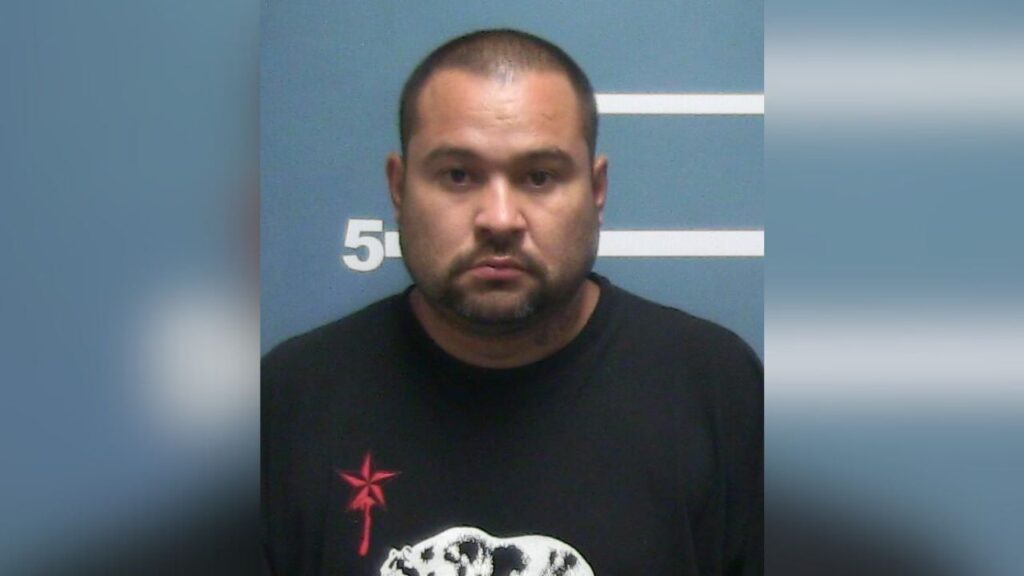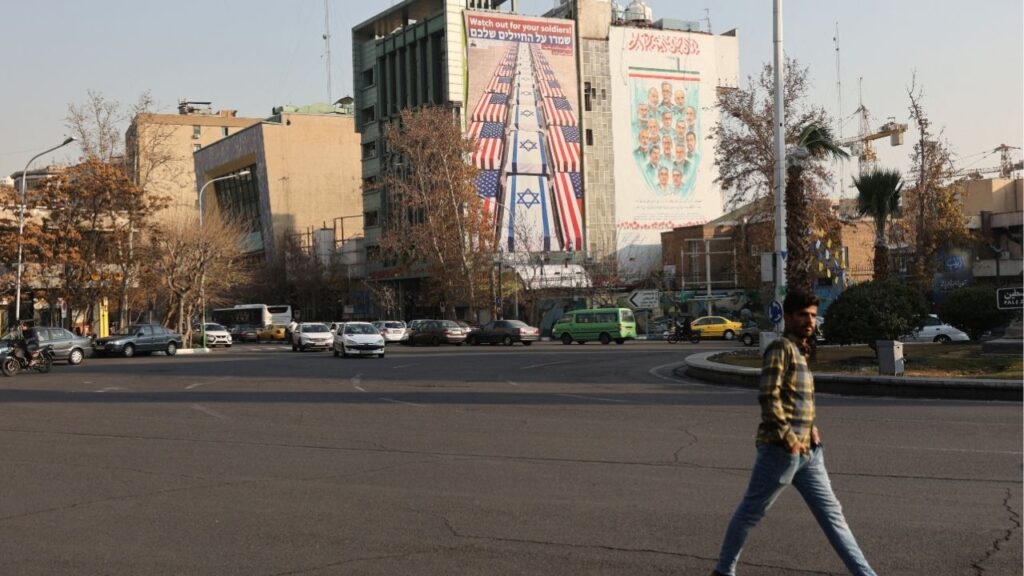Share
John Benedict Estrada’s science fair project could help California, and the rest of the world, better weather droughts like the one now gripping the state.
The impact of that project was not lost on the judges at the Regeneron International Science and Engineering Fair, which last week awarded the Clovis North sophomore the Gordon E. Moore Award of $50,000 for Positive Outcomes for Future Generations.
His project, using artificial intelligence to accurately predict drought stress in plants using images from a custom-built robotic camera that captures infrared and visible light reflected off the leaves, also won the first-place blue ribbon and $5,000 award in the science fair’s Plant Sciences category, one of 21 in the competition.
(To see John’s robotic camera in action and to see his reaction to winning the $50,000 prize, click on the video above the story.)
John was one of nearly 2,000 high schoolers — scientists, engineers, entrepreneurs, and inventors — from around the world participating in this year’s ISEF, which was held virtually for the first time. ISEF, a program of Society for Science for over 70 years, is the world’s largest global science competition for high school students.
The 16-year-old has heard about the impact of drought with depressing regularity over his young life. The U.S. Drought Monitor maps the extent of dry weather over the past two decades in California.

“When I’m looking for potential problems that need solving or anything, one of the first things that always comes to my mind, it’s always, ‘Oh yeah, drought. We’re running out of water.’ So we need to find a way to solve this issue,” he said. “So it’s always in the back of my mind. It’s always something I always want to tackle.”
Farmers Need More Accurate Assessment Tool
Farmers now use the crop water stress index, or CWSI, to estimate the impact of drought on plants, but that index is based on variables such as air temperature and vapor pressure deficit that don’t directly measure drought stress.
John wanted to develop a model that would give farmers a leg up on measuring the impact of drought and then be able to make better irrigation decisions.
He grew bell pepper plants in soil from Fresno State’s experimental field and applied five different irrigation levels, then used images from the robotic camera and data from an environmental sensor/soil moisture meter to develop an artificial intelligence assessment model that would predict drought stress.

Picking Peppers for Project
As John talks about “chlorophyll degradation pathway” and “green light reflectance,” it’s clear that he has absorbed a great deal of knowledge about plant sciences, although his real love is computer science. His project combines the two.
One of his findings: The pepper plants reflected more green light as their drought stress increased, likely the result of “stay-green” genes. That early sign of drought stress would be missed by farmers who rely on the CWSI and visual observation.
“And what’s important about this is because if you’re purely using CWSI, visually, you can’t tell that the plant is actually experiencing drought stress because to our eyes, the plant will look normal, almost,” John said. “It won’t really look different. It might even look healthier as it’s more green, and more green, we associate with healthier plants. You don’t need to water them.
“And so with my model, it’ll pick up that stay-green phenomenon and it will give a result that says it’s drought-stressed, and you’ll be able to water your plants as necessary.”
John chose bell peppers because they were available, but they had an unexpected bonus.
“Eventually as I was progressing in my research, as I was continuing my project, I found out that these bell pepper plants actually contributed more to my project than I thought because these bell pepper plants actually had the stay-green genes, the stay-green phenomenon occurring. And I don’t think I would have ever noticed that my AIDA (Artificial Intelligence Drought Assessment) model could pick up on these small nuances if I’d used a plant that didn’t have the stay-green phenomenon happening.”
Soil Scientist as Mentor

He’s been working since the seventh grade with Fresno State vegetable crop professor Dr. Dave Goorahoo. Goorahoo says the plant science research of John’s project is solid, although the teen’s work with artificial intelligence is beyond his own knowledge base.
Being able to gauge drought stress without having to damage a plant to measure water content, and being proactive instead of reactive with irrigation, would give farmers a big advantage, said Goorahoo, who also is the resident soil scientist at Fresno State’s Center for Irrigation Technology.
“I’m amazed with the technology that he implemented,” he said.
Goorahoo said his role as John’s mentor on the project included asking questions instead of supplying answers.
“When he was preparing for it, it’s not like I was actually giving him the answers, but I would probe him and I would ask, ‘Well, hey, you know, this technology’s here, pretend I am a farmer. How is this going to be useful to me?’ And if he said, well, he’s going to sell it. I said, well, look, you know, I am really too busy planting my crop, I really can’t find the time for this. And then he says, well, I could advise you. I say, ah-ha! So then if you have to bring this project forward to the community, what can you do? Well, you can probably be as a consultant or provide a service, because I told him, farmers and growers are busy people. And that’s where I think he realized that he got this idea. And he realized this is a really entrepreneurial opportunity. I hope he continues to move forward with it.”
Virtual ISEF Was ‘Cool’
Of the 1,833 students competing in this year’s ISEF, 1,092 were from the United States and its territories, and the rest were from countries that included South Korea, China, Russia, Turkey, India, and Hungary.
This year’s competition was held virtually because of the pandemic, which meant that John couldn’t mingle in person with young scientists from around the globe. But the ISEF organizers compensated with an online platform that gave participants a good virtual experience, the teen said.
“Actually, yeah, something cool that ISEF did this year was they had a sort of virtual platform where you could make an avatar and you can move around in the sort of ISEF world and you can go around and talk to people if you have a mic or you can type stuff in the chat. And they had cool things like you could go up and they had certain secret rooftop concerts and then they had like music lounges. It was a really cool substitute for in-person, actual talking.”
Although John had to stay home for this year’s ISEF, his science fair coordinator at Clovis North previously had attended ISEF in person.
“I went to Pittsburgh a few years ago when we had some students enter, and it’s very exciting,” Kay Barrie recalled. “And I’m walking around and I’m like, jeez, these kids are brilliant, and they are changing the world. And as an educator, I just feel so privileged to be a teeny-tiny piece of that.
“These kids are fundamentally changing the world. And what they do, it should be thought of as an inspiration to so many students that you never know where something is going to take you. … And for these young people to be coming up with innovative ways to change the way we look at things and to change the world is inspiring.”
Big Prizes
Projects that placed first in a category then competed for the seven top awards that ranged from $75,000 — the George D. Yancopoulos Innovator Award, named after Regeneron’s president and chief scientific officer — to $10,000. Altogether, $5 million in prizes and awards were handed out at ISEF this year.
The Gordon E. Moore Award, named for Intel’s chairman emeritus, is awarded to the project that’s recognized for making an enduring difference for future generations.
John said he’s still a little stunned at the size of his award — “That’s a lot of money and I can’t even really comprehend the amount of money,” he says with a laugh — but he knows that his award will help put Fresno on the map of science exploration and discovery.
His Fresno State mentor agrees. The Regeneron ISEF is “like the Olympics” of science fairs, and it’s quite an honor that a Valley student would be recognized with a major award, Goorahoo said.
“We are making a significant contribution to the world. And how many people in the rest of the U.S. and the rest of the world know that Fresno is still the food basket of the world? So it’s nice that John has done that,” he said.
What’s next for John? He’s got plans to take his project a step further, with field testing of his equipment and program, which until now have been lab-tested only.
“I was thinking of using a drone and a rover to go through and collect data that my robotic arm has been collecting, and use that data in my AIDA model to predict drought stress in crops. And then I was also thinking of having to retrain the data, retrain my model, because the data in a controlled environment is going to be extremely different from the data in field conditions. And there’s so much that can happen in a field that might affect the readings. I think my model needs to pick up on that and retrain and everything. And yeah, that’s looking into the future for next year. That’s what I hope to do.”


















